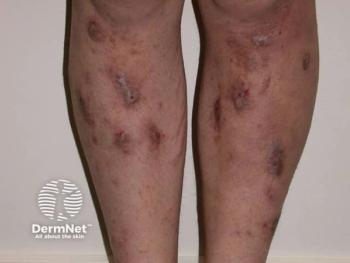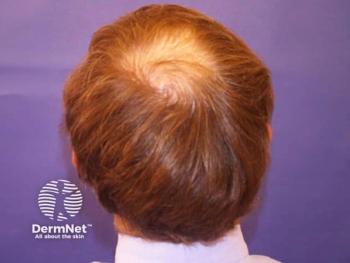
Predictive risk hierarchy for NMSC recurrence guides treatment strategies
A recent study suggests that the most important predictive factors of recurrence for nonmelanoma skin cancers (NMSC) following radiotherapy include immunosuppression, age of the patient, tumor size as well as the treatment modality used.
Toronto - A recent study suggests that the most important predictive factors of recurrence for
There are many different factors that can be predictive of local recurrence of NMSC following radiation treatment including tumor size, depth, pathology and differentiation; perineural invasion; site, recurrent tumors, and scar carcinoma; host immunosuppression; and treatment modality, total dose and dose per fraction.
“The recurrence of NMSC following radiation therapy is low; however, knowing the hierarchy of the predictive risk factors of recurrence associated with these cancers is important in optimizing treatment and improving patient management,” says Elizabeth A. Barnes, M.D., department of radiation oncology, Odette Cancer Centre, Sunnybrook Health Sciences Centre, Toronto.
Next: Predictive risk factors associated with NMSC recurrence
Predictive risk factors
Dr. Barnes and fellow researchers recently conducted a database study at the Odette Cancer Centre to evaluate and determine the most salient predictive risk factors associated with the recurrence of NMSC (Khan L, Breen D, Zhang L, et al. Curr Oncol. 2014;21(2):e326-e329). The study included 389 patients (mean age 78) who received radiotherapy for 448 NMSCs (207 BCCs, 115 sclerosing BCCs, and 126 SCCs).
The clinic’s prospective database included patient and tumor factors, as well as treatment factors such as dose and fractionation, biologic equivalent dose in 2-Gy fractions (eqd2), and treatment modality. Radiotherapy was delivered using orthovoltage X-rays, electrons, or megavoltage photons, and the choice of treatment modality and energy used depended on the tumor size, depth and location. Univariate and multivariate analyses were performed to determine the factors associated with recurrent disease.
In the 448 tumors treated, the local recurrence rate was 15.8 percent, occurring at a median of 11.4 months after treatment. Older age, a tumor size of 2 cm or greater, host immunosuppression, and the use of photon radiotherapy were all associated with a greater chance of local recurrence.
Different types of radiation ranging from more superficial to deeper reaching radiotherapy can be used to treat NMSC and according to the multivariate analysis performed, it appears that the most important predictive factor was the type of radiation treatment modality used. Photon radiotherapy is commonly used in other cancers such as breast and prostate, Dr. Barnes says, and the patients in this study who received photon radiotherapy had more aggressive and deeper NMSC, which innately have a higher risk for recurrence and therefore were treated with this type of deeper radiation.
“The data showed that patients who were treated with a deeper radiation had a higher risk of recurrence but when you think about it, that doesn’t exactly make sense and in retrospect, this was likely more of a selection/sampling bias. We believe that those patients who received photon radiotherapy had advanced disease and their increased rate of recurrence was more likely due to the nature of the more aggressive tumor and not because of the type of radiation,” Dr. Barnes says.
Next: Immunosupression: Most significant risk factor
Eye on immunosuppression
According to Dr. Barnes, perhaps the most significant predictive factor that impacts recurrence is immunosuppression, commonly seen in organ transplant patients, followed by tumors of 2 cm in diameter or greater, as well as elderly patients. Other studies have also shown that age, larger tumor size and immunosuppression are central factors that impact a higher risk of recurrence, Dr. Barnes says.
Organ transplant patients are immunosuppressed because of the anti-rejection drugs required and, therefore, they have a higher rate of getting skin cancers, which will typically act more aggressively due to the immunosuppression.
“Host immunosuppression has long been established as a critical risk factor and as such, these patients should be treated quickly without any delay, as well as those with a larger tumors and elderly patients,” Dr. Barnes says.
Some of these patients who are at a higher risk for recurrence due to their immunosuppression, tumor size and/or age could possibly benefit from higher doses of radiotherapy. Dose escalation, however, does not necessarily translate into a longer course of radiation therapy, she says, as one could also administer slightly stronger individual radiation treatments which ultimately will add up to a dose escalation by the end of the treatment course.
“One would have to carefully weigh options and individualize treatment in select patients who may be appropriate for dose escalation according to their risk factors because higher doses of radiation are associated with a higher risk of side effects,” Dr. Barnes says. “Fortunately, however, the sophistication of modern radiotherapy enables dose escalation to the target tumor while minimizing the dose to critical structures, increasing treatment efficacy while decreasing morbidity.”
Disclosures: Dr. Barnes reports no relevant financial interests.
More on skin cancer
Newsletter
Like what you’re reading? Subscribe to Dermatology Times for weekly updates on therapies, innovations, and real-world practice tips.


















